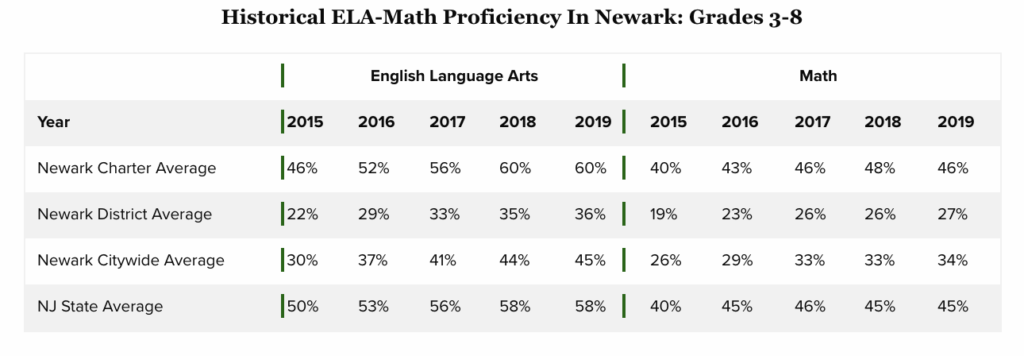By TAPinto Newark,
NEWARK, NJ – Newark public school students posted a fourth consecutive year of improved results on New Jersey state tests–with the city’s charter school sector continuing to stand out, according to a new report.
The report by the New Jersey Children’s Foundation found that the citywide average of math and reading test scores across all district and charter school students showed improvement again this year. The citywide combined English language arts (ELA) and math average for grades 3-8 rose to 39.2% in 2019 from 27.6% in 2016.
“This data is proof positive that Newark is on the right path: a citywide school system of improving district schools alongside growing charter schools that all work together as neighbors and collaborators,” said Kyle Rosenkrans, executive director of the New Jersey Children’s Foundation.
The report noted that public charter schools in Newark as a whole are beating state averages for the second year in a row with 53% of charter school students in grades 3-8 proficient in ELA and math this year compared to 51.5% statewide.
The results for Newark are even more remarkable, the report noted, because 84% of Newark charter school students are low income compared to 38% statewide. In Newark, 98% of the student who attend charter schools are either black or Hispanic compared to 44 percent statewide.
“The bottom line is that a larger share of Newark kids are reading and doing math on grade level again this year, and in so doing, they show the rest of the state and the country what’s possible,” Rosenkrans said.
Newark is home to some of the highest-performing charter networks in the country, including Uncommon Schools and KIPP.
A 2015 report from the Center for Research on Education Outcomes at Stanford University ranked Newark’s charter sector as number two in America, second only to Boston’s.
The report noted that key components of the test changed for 2019, which some have attributed to the slower overall rate of improvement–as is common with such transitions. While the rate of improvement may have slowed, the increase in the percentage of proficient students citywide is likely attributable to the growing overall number of students in the city’s high-performing charter school sector. A more detailed breakdown of proficiency rates in math and reading shows that Newark’s schools largely followed the statewide pattern of slower increases in proficiency, according to the report.
In the last decade, Newark’s education system has undergone an often controversial transformation as various factions clashed over the best course to take to reform education. During that period, charter schools have grown from just 7% of the students in 2006 to nearly 40% today.
During most of the last decade, the city’s schools were operated by the state, which took over Newark Public Schools in 1995. The school district regained local control in 2018 and in one of its first acts, hired Roger Leon as superintendent. Unlike his two predecessors, Leon had worked his way up through the district.
The report noted that while Leon has rolled back several changes put in place while the district was under state control, he has maintained a collaborative relationship with the city’s growing public charter school sector.

